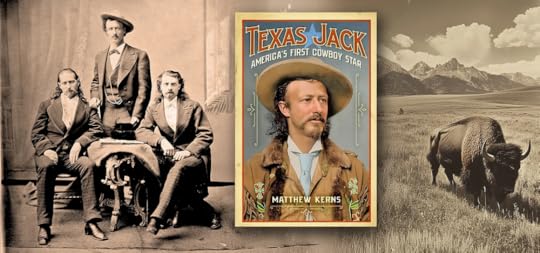Matthew Kerns's Blog: The Dime Library, page 5
February 19, 2025
Part 6 - The Dakota War - Killdeer Mountain: Legends of the Old West
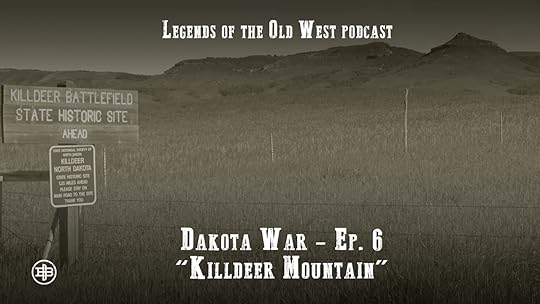
Episode 6 of 6 in a series on the 1862 Dakota War I wrote for Legends of the Old West. In this episode, the Dakota War reaches its dramatic conclusion. After months on the run, Dakota leader Little Crow meets his fate in a fatal encounter near Hutchinson, Minnesota. Meanwhile, the U.S. Army escalates its campaign against the Sioux Nation, culminating in brutal battles and forced removals that reshape the Great Plains.
General Henry Sibley and General Alfred Sully push westward, seeking to crush the Dakota resistance. Along the way, they clash with an emerging warrior destined to become a legend—Sitting Bull. At Killdeer Mountain, Sitting Bull and his fellow warriors make a desperate stand, but Sully’s superior firepower devastates their village. The brutal march into exile begins, as the Dakota are driven from their homeland in a tragedy that still echoes today.
But the war is far from over. As the U.S. military intensifies its campaign against the Sioux people, the focus shifts westward to the Lakota, who will rise to defend their lands in a series of escalating conflicts. From the Powder River battles of the late 1860s to the legendary clash at Little Bighorn, the seeds of resistance are sown in the aftermath of the Dakota War, setting the stage for an even greater struggle on the northern plains.
Listen now to "The Dakota War: Killdeer Mountain" on your favorite podcast platform.
Available on Spotify:
And Apple Podcasts:
All of the Legends of the Old West podcasts are available at:
https://blackbarrelmedia.com/legends-of-the-old-west/
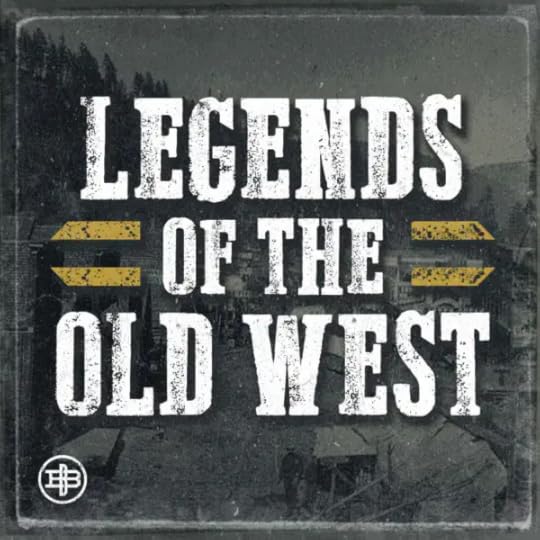
My book, Texas Jack: America's First Cowboy Star, is available at:
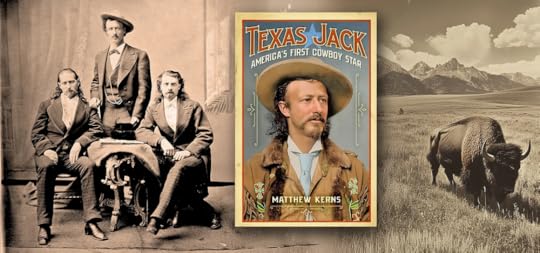
February 12, 2025
Part 5 - The Dakota War - Judgement Day: Legends of the Old West
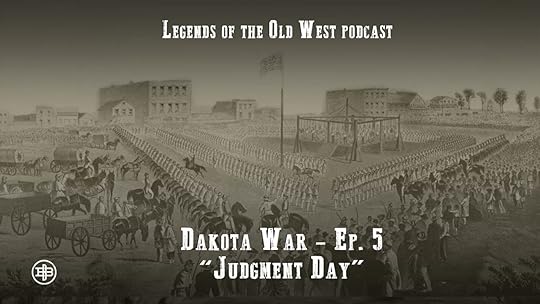
Episode 5 of 6 in a series on the 1862 Dakota War I wrote for Legends of the Old West. The Dakota War of 1862 was a bloody and desperate conflict that shook southern Minnesota, culminating in an unprecedented moment in American history. In this episode of Legends of the Old West, we unravel the dramatic final chapter—where the war’s end gave way to a swift and controversial judgment. After the Dakota warriors surrendered, a hastily assembled military commission sentenced 303 men to death in trials that often lasted mere minutes. As public outcry for retribution grew, President Abraham Lincoln faced an impossible decision: either approve the largest mass execution in U.S. history or risk the fury of Minnesota’s settlers. After personally reviewing the cases, Lincoln commuted most of the sentences but still allowed 38 men to hang—an execution that would leave an enduring stain on the American frontier.
With tensions at a breaking point, the condemned Dakota warriors were marched through the bitter cold to the town of Mankato, where a massive gallows had been constructed for their final moments. Thousands gathered to witness what they believed to be justice, but as the warriors chanted their death songs in unison, a chilling silence swept over the crowd. Then, with a single signal, the trapdoor fell, and 38 men were hanged at once—the largest mass execution in U.S. history. It was a moment of reckoning that neither the settlers nor the Dakota would ever forget.
But the story does not end with the gallows. In the aftermath, the Dakota people faced mass imprisonment, forced removal from their homeland, and an uncertain future. Minnesota’s governor declared that the Dakota must be “exterminated or driven forever beyond the borders of the state,” setting the stage for further conflicts on the northern plains. If you think you know the story of the Old West, Judgment Day will challenge everything you thought you understood. Don’t miss this powerful and haunting episode of Legends of the Old West.
Listen now to "The Dakota War: Judgement Day" on your favorite podcast platform.
Available on Spotify:
And Apple Podcasts:
All of the Legends of the Old West podcasts are available at:
https://blackbarrelmedia.com/legends-of-the-old-west/
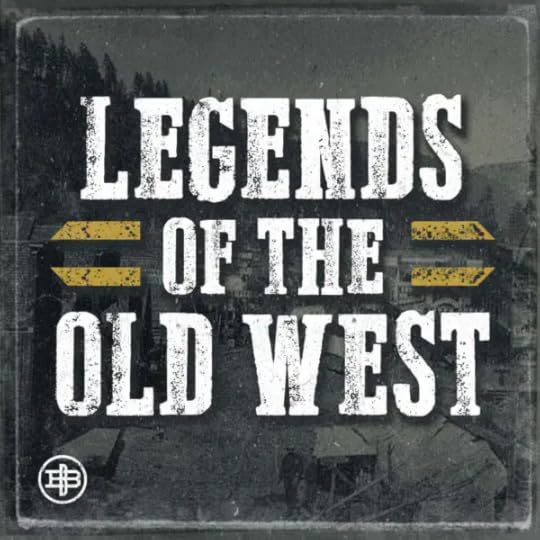
My book, Texas Jack: America's First Cowboy Star, is available at:
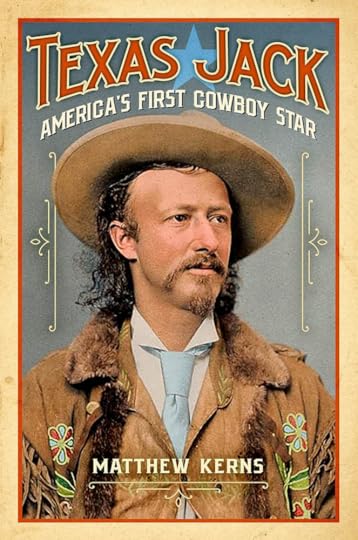
February 7, 2025
The Battle of Wood Lake
An unauthorized breakfast run may have saved an entire army. Here’s how a group of hungry soldiers accidentally foiled a deadly ambush.
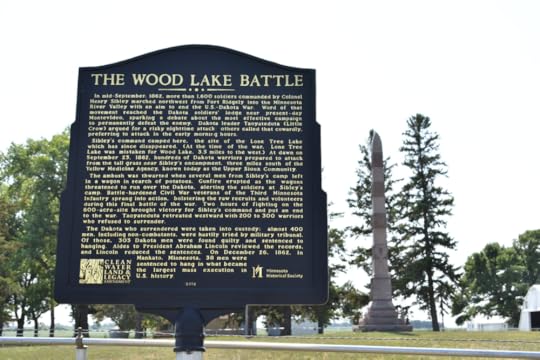
On the night of September 22, 1862, Dakota warriors lay hidden in the tall prairie grass, waiting for the perfect moment to strike. They had meticulously planned an ambush on Colonel Henry Sibley’s troops, who had set up camp near Wood Lake Creek, just a few miles short of the Upper Sioux Agency. At first light, the plan was simple but devastating: as soon as Sibley’s men began marching, the Dakota warriors would erupt from hiding and catch them completely off guard.
It was supposed to be a decisive moment in the Dakota War.
But then—breakfast happened.
At dawn, a group of soldiers from the 3rd Minnesota Infantry Regiment, restless and hungry, made an unauthorized decision to go foraging for potatoes. They piled into wagons and rode out from camp, completely unaware that they were stepping straight into enemy territory.
The Dakota warriors, expecting an entire army to march into their trap, were instead confronted with a small, unsuspecting foraging party. Realizing the element of surprise was slipping away, they opened fire.
Gunshots rang out across the prairie, shattering the morning silence. The foraging soldiers, caught in the open, were quickly overwhelmed. But their doomed expedition had one unintended consequence—it alerted the rest of Sibley’s army to the ambush before it could be fully sprung.
Hearing the gunfire, Major Abraham Welch of the 3rd Minnesota Infantry quickly rallied 200 men and launched a counterattack. Meanwhile, Sibley’s forces scrambled into defensive positions, bringing in artillery and reinforcements. What could have been a devastating defeat turned into an organized response.
For two hours, the battle raged. The Dakota warriors fought fiercely, using the rolling terrain and tall grass to their advantage. But Sibley’s soldiers, now fully engaged, had superior firepower, including deadly canister shots from artillery. The Dakota warriors began to fall back. By the time the smoke cleared, the U.S. forces had won a decisive victory, crushing any remaining organized resistance in the Dakota War.
And to think—it all could have ended differently if not for a handful of soldiers looking for breakfast.For the complete story of The Dakota War, check out the Dakota War series I wrote for Legends of the Old West:
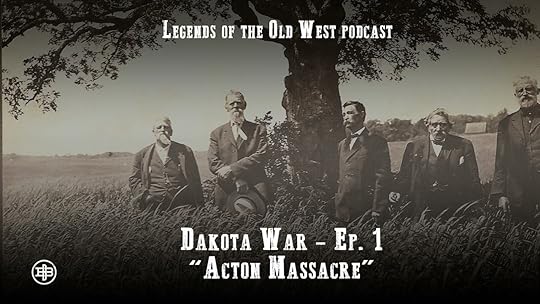
February 5, 2025
Part 4 - The Dakota War - The Turning Tide: Legends of the Old West
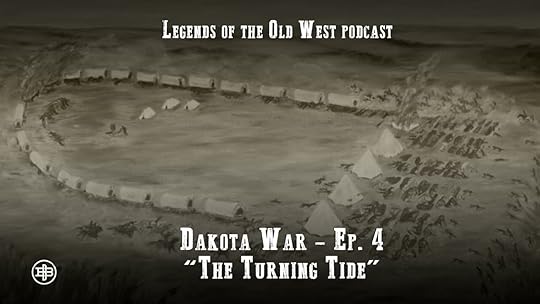
Episode 4 of 6 in a series on the 1862 Dakota War I wrote for Legends of the Old West. After surviving two brutal assaults, the defenders of Fort Ridgely finally receive reinforcements from Colonel Henry Sibley and his 1,400 troops. Though the immediate threat has subsided, the Dakota War is far from over. Settlers remain under siege, militia units scramble to secure the frontier, and the Dakota warriors continue their campaign of resistance, striking isolated outposts and stagecoach lines. The war’s bloody grip extends across Minnesota, leaving towns fortified and families displaced in a desperate bid for survival.
As Sibley reorganizes his forces, the conflict reaches a turning point at Birch Coulee, where a Dakota ambush nearly wipes out a U.S. burial party. For 31 grueling hours, the soldiers cling to life under relentless gunfire until reinforcements finally break the siege. Meanwhile, Little Crow and his warriors shift tactics, launching swift and devastating raids on settlements, but with dwindling supplies and growing opposition, the tide begins to turn. With U.S. forces closing in and Minnesota’s leadership calling for swift action, the final showdown looms on the horizon.
Listen now to "The Dakota War: The Turning Tide" on your favorite podcast platform.
Available on Spotify:
And Apple Podcasts:
All of the Legends of the Old West podcasts are available at:
https://blackbarrelmedia.com/legends-of-the-old-west/
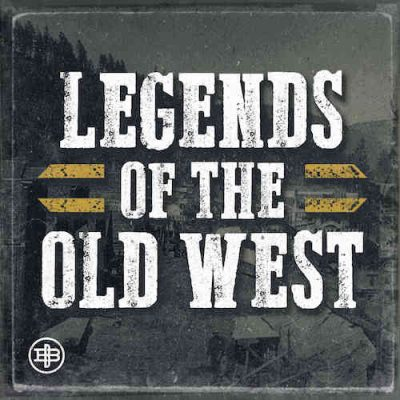
My book, Texas Jack: America's First Cowboy Star, is available at:
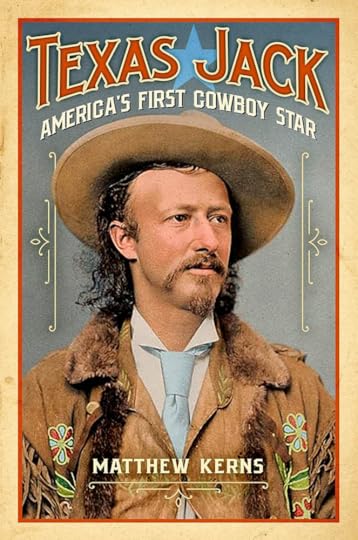
January 29, 2025
Part 3 - The Dakota War - Siege of Fort Ridgely: Legends of the Old West
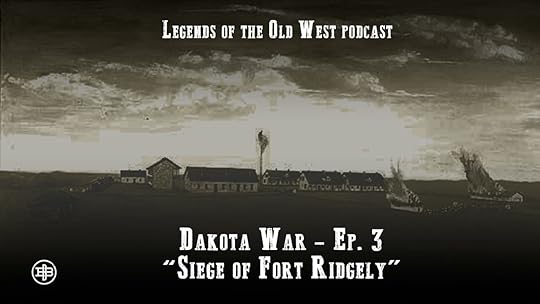
Episode 3 of 6 in a series on the 1862 Dakota War I wrote for Legends of the Old West. As the Dakota War raged on, Fort Ridgely stood as a fragile lifeline for settlers and soldiers alike. After the devastating ambush at Redwood Ferry, a small band of defenders—led by 19-year-old Lieutenant Thomas Gere—prepared for what they knew was coming. The first assault came on August 20, but the real test arrived two days later when more than 800 Dakota warriors, twice the original number, launched a relentless attack. Led by Little Crow, the Dakota forces pressed forward with strategic precision, using the terrain and captured buildings to their advantage.
With supplies running low and the outpost poorly fortified, the defenders had little hope—until the cannons roared. Ordnance Sergeant John Jones ordered the last rounds of canister shot to be fired at point-blank range, cutting down waves of attackers. Meanwhile, the settlers, armed with whatever they could find, stood shoulder-to-shoulder with the soldiers in brutal hand-to-hand combat. When night fell, the Dakota forces finally withdrew, but the fort was left in ruins, its defenders battered and out of ammunition. Their only hope? Reinforcements that might not arrive in time.
Listen now to "The Dakota War: Siege of Fort Ridgely" on your favorite podcast platform.
Available on Spotify:
And Apple Podcasts:
All of the Legends of the Old West podcasts are available at:
https://blackbarrelmedia.com/legends-of-the-old-west/
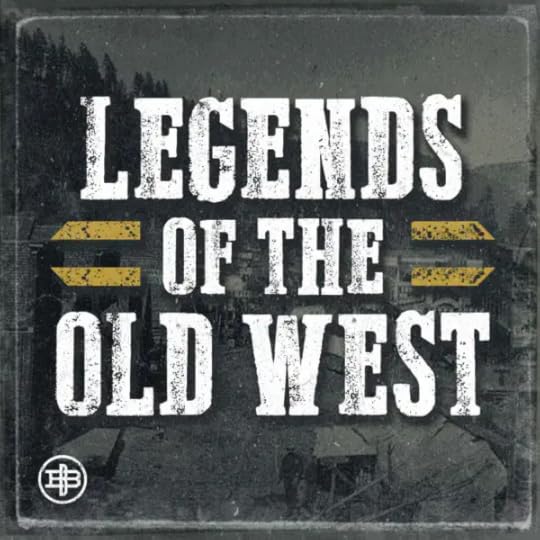
My book, Texas Jack: America's First Cowboy Star, is available at:
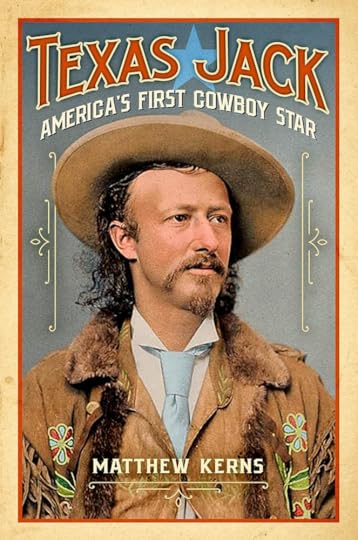
January 26, 2025
Buffalo Bill(s) & The Chiefs
As the Buffalo Bills and Kansas City Chiefs face off in the AFC Championship tonight at 6:30 PM EST on CBS, there’s a certain energy in the air that feels like it’s been borrowed from history. These two teams, named for figures and cultures deeply rooted in America’s frontier past, call back to a time when the untamed West was a land of opportunity, danger, and legendary rivalries. It’s no surprise that football, America’s most mythic sport, has often been likened to the Wild West—filled with gunslingers, daring plays, and showdowns under the lights.
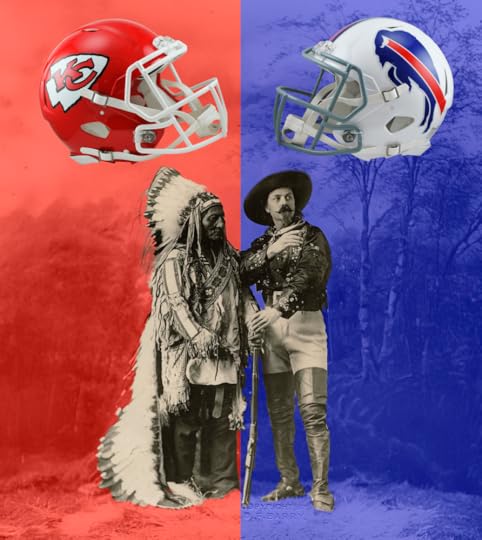
The Bills’ namesake, Buffalo Bill Cody, embodies this connection to history. A scout, showman, and quintessential figure of the frontier, Cody’s exploits became larger than life—much like the modern-day heroes of the gridiron. Back in the spring of 1872, Buffalo Bill and his cowboy partner, Texas Jack Omohundro, found themselves in a life-and-death struggle with Miniconjou Sioux horse thieves near Fort McPherson, Nebraska. In that encounter, Texas Jack saved Cody’s life, cementing their bond as legendary “pards” of the plains. That same spirit of teamwork and bravery will undoubtedly be on display tonight as players like Josh Allen and Patrick Mahomes lead their teams into battle.
Meanwhile, the Chiefs’ name pays homage to Native American cultures, which played a pivotal role in the frontier narrative. The name itself originates from Kansas City mayor H. Roe Bartle, nicknamed “The Chief,” who played a key role in bringing the franchise to the city in the 1960s. Over time, however, the team’s use of Native imagery—such as tomahawk chop chants and arrowhead symbolism—has sparked controversy. Critics argue that these practices perpetuate harmful stereotypes and trivialize Native cultures, while supporters contend that the team uses these symbols to honor Native American heritage. The team has taken steps in recent years to address concerns, such as banning fans from wearing headdresses and reviewing some traditions. Still, the debate reflects broader discussions about cultural representation and respect, adding another layer of history and significance to tonight’s matchup.
Tonight’s game is a reminder of the mythic stage on which America’s story has been written. The quarterbacks will take their roles as modern-day gunslingers, each hoping to outduel the other and claim the glory of leading their team to the Super Bowl. Like Buffalo Bill Cody and Native American chiefs of old, they’ll face the challenges head-on, armed with grit, skill, and determination. Under the stadium lights, we’ll witness a new chapter in a long history of legendary clashes—one that still carries echoes of the Wild West.
January 23, 2025
The Gruesome Death of Andrew Myrick
On the morning of August 18, 1862, Dakota warriors launched a devastating attack on the Lower Sioux Agency, igniting the Dakota War. For years, the Dakota had endured broken treaties, starvation, and the callous exploitation of corrupt traders. Among the most despised was Andrew Myrick, a trader who had married a Santee Dakota woman to secure access to the profitable trade with her people. Despite this connection, Myrick became a symbol of cruelty and greed. Earlier that summer, when desperate Dakota leaders pleaded for food to save their starving families, Myrick infamously sneered, “As far as I’m concerned, if the Indians are hungry, let them eat grass, or their own dung!”
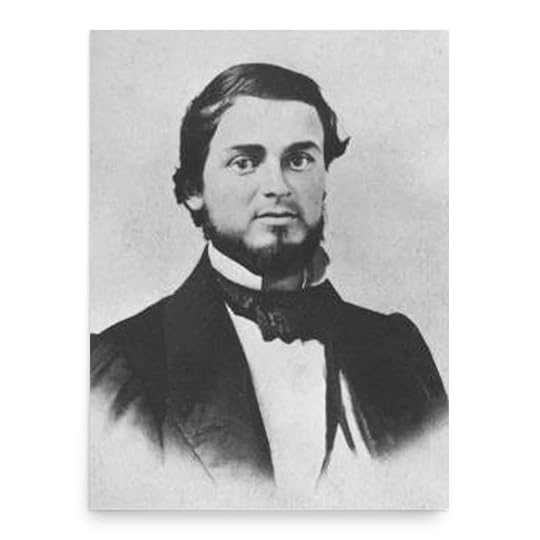
When the attack began, Myrick tried to escape through an attic window but was shot and killed by Dakota warriors. His death, however, was not the end of his story. His body was later found mutilated in a grisly act of symbolic revenge. His head had been cut off, his mouth stuffed with grass—a direct and macabre answer to his heartless remark. Grass had also been stuffed into his buttocks, a final, brutal gesture underscoring the Dakota’s rage at his cold indifference to their suffering.
Mdewakanton chief Big Eagle (Waŋbdí Tháŋka) said, “Now he was lying on the ground dead, with his mouth stuffed full of grass, and the Indians were saying tauntingly: 'Myrick is eating grass himself.'”
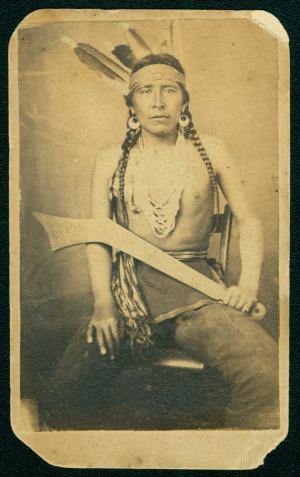
Myrick’s death became an enduring symbol of the Dakota War, encapsulating the deep anger born of years of systemic injustice. For the Dakota, it was an act of vengeance against a man who had profited while they starved, a visceral demonstration of their desperation and fury. For settlers and historians, his gruesome fate serves as a stark reminder that they were now at war. As the Dakota War unfolded, Myrick’s death stood out as a brutal warning of the costs of exploitation, neglect, and the path of unchecked greed and cruelty that can lead to catastrophic consequences.
The full story of the Dakota War is available from Legends of the Old West at:
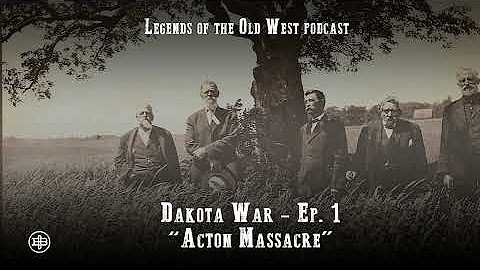
https://youtube.com/playlist?list=PL6G75NdBQ3EcB8yTuR9rPeYOxHRF2z5as&si=JyjJWGueFKtGjvQP
January 22, 2025
Part 2 - The Dakota War - Assault on Lower Sioux Agency: Legends of the Old West
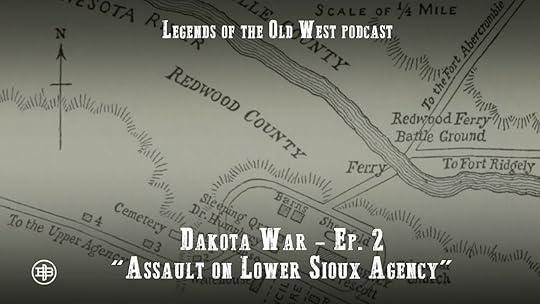
Episode 2 of 6 in a series on the 1862 Dakota War I wrote for Legends of the Old West. On the morning of August 18, 1862, the tranquil Minnesota River Valley was rocked by gunfire as the Dakota launched a sudden and devastating attack on the Lower Sioux Agency. Fueled by years of broken promises, famine, and rising anger, the warriors struck with swift precision. Led by Little Crow, they sought to reclaim their dignity and ensure their survival after a pivotal council the night before determined that after four young men killed five settlers the day before, war was inevitable.
Chaos erupted as settlers, caught entirely off guard, scrambled for their lives. Flames engulfed the buildings, warriors surged through the agency, and the surrounding countryside became a deadly battleground. The infamous killing field at Redwood Ferry saw terrified settlers and traders ruthlessly cut down as they tried to flee. A poignant act of vengeance saw Andrew Myrick, a white trader who had married a Dakota woman to gain access to trade with the tribe, infamous for his cruel dismissal of Dakota suffering, killed on the first day of the war. When told that the Dakota around him were starving, Myrick refused to sell them food on credit, responding, "Let them eat grass." Now he was found dead, his head cut from his body and his mouth stuffed with prairie grass—a chilling symbol of retribution.
The assault marked the explosive beginning of the Dakota War, forever altering the southern Minnesota frontier. With settlers fleeing to Fort Ridgely and other safe havens, the region braced itself for further conflict. Little did they know, this was only the beginning of a relentless campaign. Listen now to "The Dakota War: Assault on Lower Sioux Agency" on your favorite podcast platform.
Available on Spotify:
Apple Podcasts:
All of the Legends of the Old West podcasts are available at:
https://blackbarrelmedia.com/legends-of-the-old-west/
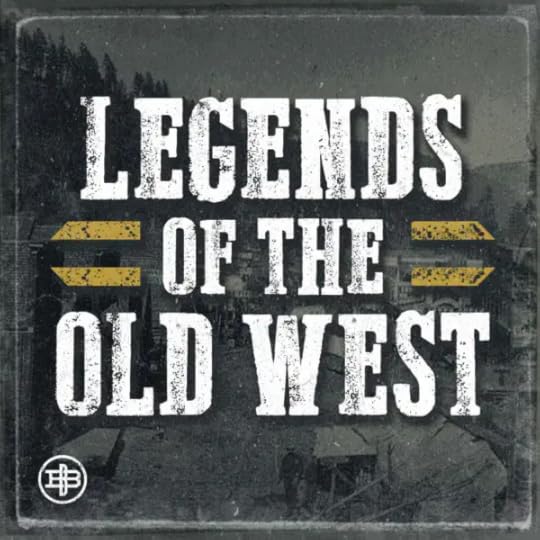
My book, Texas Jack: America's First Cowboy Star, is available at:
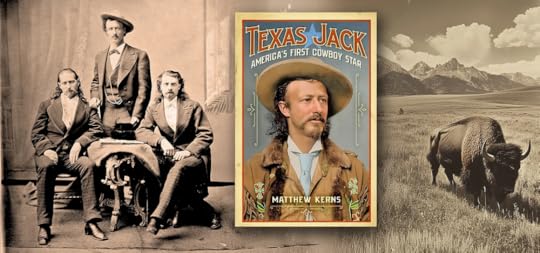
January 16, 2025
His Red Nation
Little Crow, or Thaóyate Dúta, meaning "His Red Nation," had a path to leadership shaped by personal and familial strife. He was known as Little Crow due to his family's association with the name "Petit Corbeau," given by the French to his grandfather, Čhetáŋ Wakhúwa Máni ("Hawk that hunts walking"), and later applied to his father, Wakinyantanka ("Big Thunder"). Born into the Mdewakanton band of the Dakota Sioux, Little Crow’s ascension to chief was anything but straightforward.
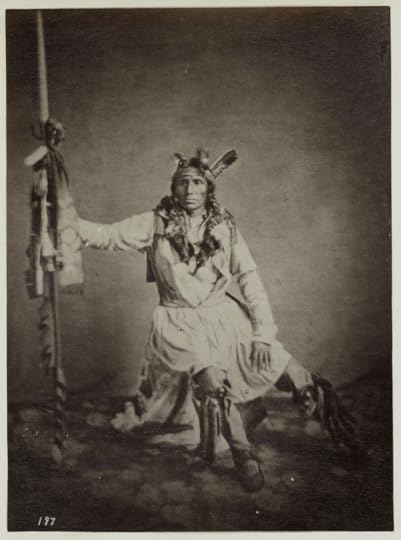
When his father, Wakinyantanka, died in 1846 after accidentally shooting himself, leadership of the band was passed not to Little Crow, despite his seniority, but to his younger half-brother. This decision set the stage for deep familial tensions. Little Crow, returning from a prolonged absence, sought to claim his rightful place, but his half-brothers resisted. This culminated in a violent confrontation, during which his brother shot him in both wrists. The injury left Little Crow permanently disfigured, and in Dakota culture, where physical strength was vital to leadership, many saw this as disqualifying. Despite the odds, Little Crow survived and refused amputation, displaying the resilience and determination that would define his leadership. His brothers were later killed in retribution for the attack, and Little Crow emerged as the rightful chief, with the full support of his band.
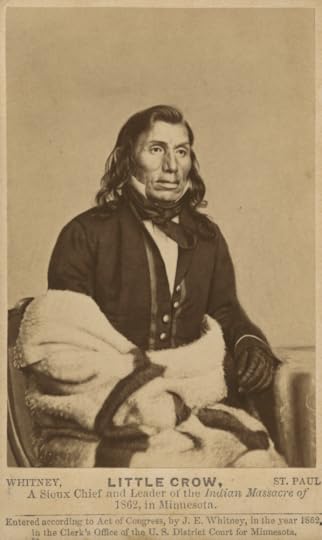
Before the Dakota War of 1862, Little Crow's leadership was tested by increasing pressures from broken treaties and settler encroachment on Dakota lands. His rise to chiefdom, marked by personal adversity, solidified his position as a determined and pragmatic leader who understood the weight of his responsibilities to his people. His early experiences, including the violent family struggle, shaped the leader who would later navigate the profound crisis of the Dakota people.
Listen now to "Legends of the Old West: The Dakota War Episode 1 - Acton Massacre" on your favorite podcast platform.
Available on YouTube:

Spotify:
And Apple Podcasts:
January 15, 2025
Part 1-The Dakota War-Acton Massacre: Legends of the Old West

Episode 1 of 6 in a series on the 1862 Dakota War that I wrote for Legends of the Old West. On a blazing August day in 1862, desperation boiled over in Acton Township, Minnesota. Four young Dakota warriors, driven by starvation and years of broken promises, stumbled upon a settler's homestead. What began as an argument over a few eggs erupted into violence, leaving five settlers dead and the region teetering on the brink of war.
The shocking events of what would soon be called the "Acton Massacre" forced the Dakota community into an impossible choice: seek peace or prepare for an all-out conflict with the U.S. government. In this gripping first episode, we delve into the roots of the Dakota's plight—broken treaties, starvation, and a relentless push westward by settlers—while introducing Little Crow, a reluctant but courageous leader who would soon guide his people into one of the most pivotal battles of the American frontier.
Listen now to "The Dakota War: Acton Massacre" on your favorite podcast platform.
Available on Spotify:
And Apple Podcasts:
All of the Legends of the Old West podcasts are available at:
https://blackbarrelmedia.com/legends-of-the-old-west/
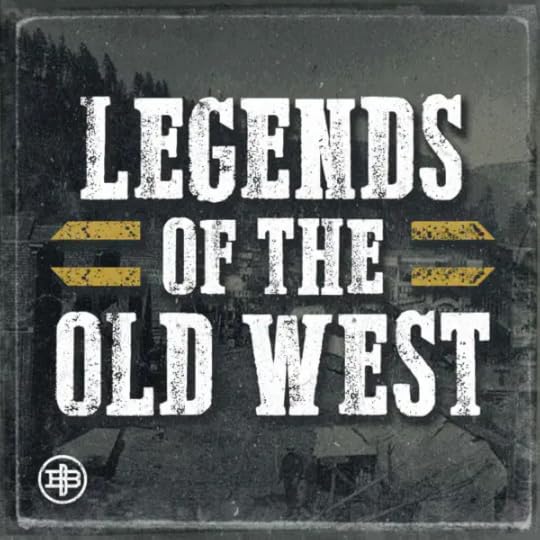
My book, Texas Jack: America's First Cowboy Star, is available at:https://amzn.to/4g4WCxQ
